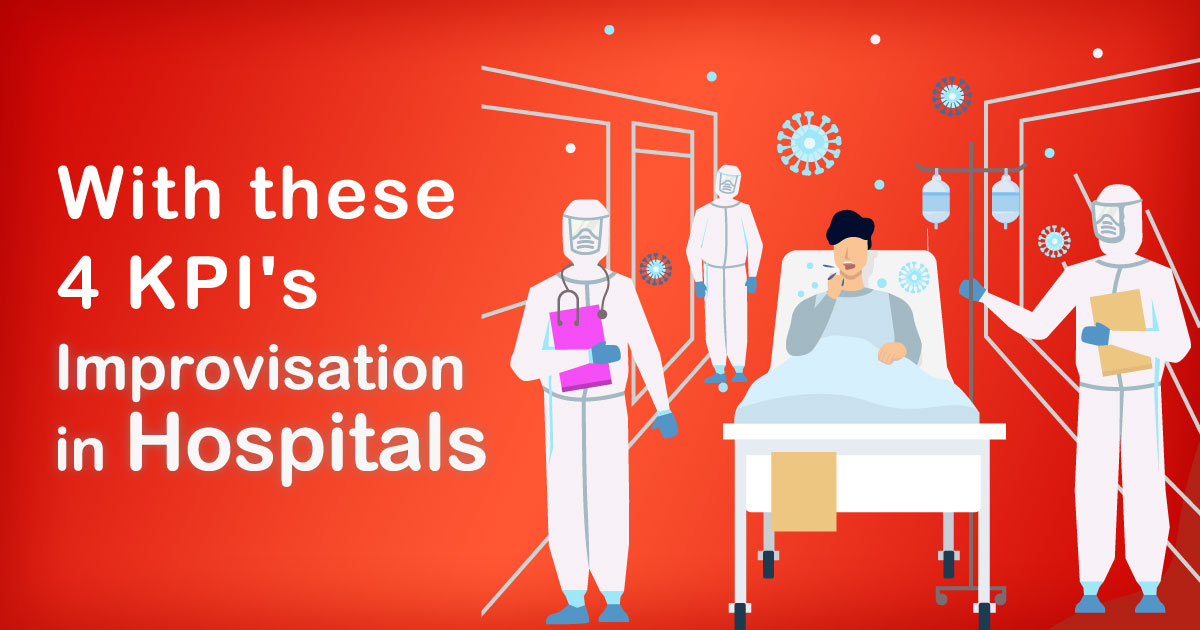Introduction
In today’s fast-paced and demanding healthcare environment, the efficient functioning of hospital equipment and assets is crucial for providing quality patient care. Hospital administrators and facility managers constantly strive to optimize maintenance practices and reduce downtime to ensure the seamless operation of critical medical equipment. To achieve this, they can adopt a superhero-like approach by focusing on four essential Key Performance Indicators (KPIs): Mean Time To Acknowledge (MTTA), Mean Time To Repair (MTTR), Mean Time Between Failures (MTBF), and Mean Time To Failure (MTTF). In this article, we’ll explore the significance of these KPIs and their industry-specific examples to empower healthcare professionals to enhance their improvisation in hospitals.
1. Mean Time To Acknowledge (MTTA):
MTTA measures the time taken from the moment an issue is reported or detected until it is acknowledged by the maintenance team. In a hospital setting, swift acknowledgment of equipment malfunctions or failures is vital to prevent any potential disruption in patient care.
Example: Consider a scenario where a critical life support system, such as a ventilator, experiences an alarm indicating a fault. The MTTA KPI ensures that the maintenance team receives an alert immediately, allowing them to initiate a rapid response to address the issue promptly and ensure patient safety.
2. Mean Time To Repair (MTTR):
MTTR represents the average time taken to repair a malfunctioning asset or equipment from the moment it is reported. Minimizing MTTR is essential to reduce equipment downtime and maintain smooth operations within the hospital.
Example: Let’s say a computed tomography (CT) scanner encounters a technical glitch, causing it to be temporarily unavailable. A well-organized maintenance team will promptly assess the problem, diagnose the root cause, and carry out the necessary repairs to bring the CT scanner back into operation, thus minimizing patient appointment rescheduling and ensuring timely diagnoses and treatments.
3. Mean Time Between Failures (MTBF):
MTBF signifies the average time elapsed between two consecutive failures of a specific asset. A higher MTBF value implies that the equipment is more reliable and experiences fewer breakdowns.
Example: Consider a hospital’s magnetic resonance imaging (MRI) machine. A high MTBF value for this equipment indicates that it experiences infrequent breakdowns, allowing uninterrupted patient examinations and reducing the likelihood of significant disruptions in the diagnostic process.
4. Mean Time To Failure (MTTF):
MTTF is the average time an asset operates without experiencing a failure. It helps maintenance teams plan for preventive maintenance tasks and replacement schedules, thereby reducing the occurrence of unexpected breakdowns.
Example: Let’s look at a hospital’s backup power generator. The MTTF KPI enables the facility management team to estimate how long the generator can run without failure, allowing them to schedule timely maintenance and avoid any potential power outages during critical times.
Industry-specific assets and maintenance activities:
In hospitals, a wide range of assets requires regular maintenance to ensure seamless operations. Here are a few examples:
Imaging Equipment:
MRI machines, CT scanners, X-ray machines, and ultrasound systems are critical assets in modern hospitals. Regular maintenance, calibration, and software updates are essential to ensure accurate and reliable imaging results.
Life Support Systems:
Ventilators, cardiac monitors, and infusion pumps are life-saving assets. Regular inspection and maintenance guarantee their optimal functioning and reduce the risk of equipment failure during patient care.
Laboratory Equipment:
Automated analyzers, centrifuges, and blood gas analyzers play a crucial role in diagnostic processes. Scheduled maintenance and calibration are necessary to ensure accurate test results and prevent disruptions in the laboratory workflow.
Conclusion:
Emphasizing the four key KPIs – MTTA, MTTR, MTBF, and MTTF – hospitals can adopt a superhero-like approach to improve maintenance practices and asset reliability. Efficiently managing these KPIs will lead to reduced downtime, enhanced patient care, and increased staff productivity. By adopting industry-specific examples, healthcare professionals can pave the way for a more agile and proactive approach to improvisation in hospitals, ultimately saving lives and elevating the standard of healthcare services provided.








